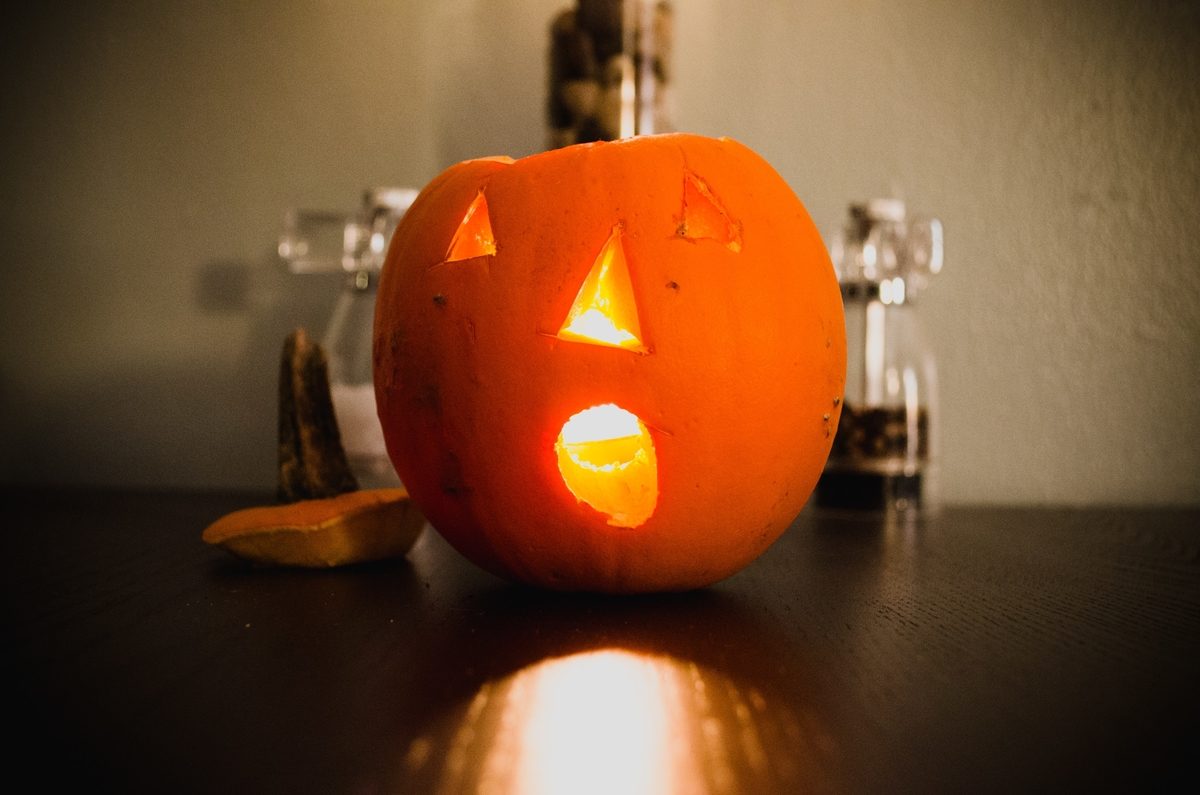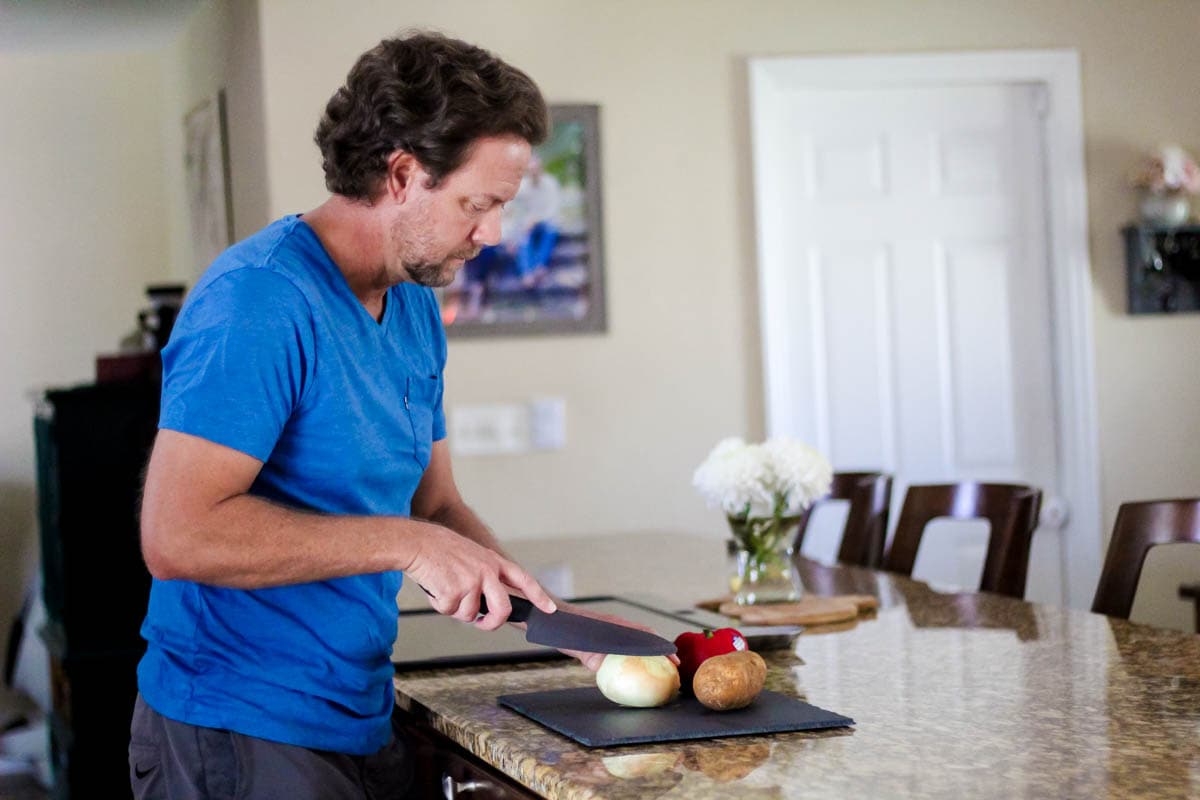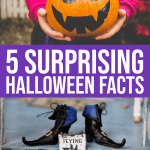Halloween transitioned from a number of different cultural rituals into the costumes, carving pumpkins, and trick-or-treating that we know today. Along with some ancient traditions involving the end of harvest and the spirit world are some interesting ties to the Catholic Church and even matchmaking. Here are 5 true Halloween facts that might surprise you.
Halloween Facts
Halloween has ancient Celtic origins
Halloween evolved from an ancient Celtic holiday called Samhain. Samhain was a pagan religious festival usually celebrated from October 31 to November 1 – the midpoint between the fall equinox and the winter solstice – in order to give thanks for the harvest and signal the dark half of the year. After the harvest was complete, the community would gather and light a fire that represented the sun.

People believed that during Samhain the barrier between the physical world and the spirit world broke down, allowing interaction between humans and the inhabitants of the spirit world. They believed ancestors would cross over during this time. Because of the breach between the two worlds, people would prepare offerings to be left outside villages and fields for fairies (and not the nice, sweet fairies we think of today). They would also often dress as animals and monsters so that the fairies were not tempted to kidnap them.
Read More: 12 Terrifying Halloween Decorations for Your Home
More fun Halloween facts tie Halloween with traditions that originated in the Old World. Trick-or-treating is said to have been derived from ancient Irish and Scottish practices from the nights leading up to Samhain. In Ireland, it was tradition to put on costumes and go door-to-door singing songs to the dead in exchange for cakes. Halloween pranks also have a tradition in Samhain, as tricks were often blamed on evil fairies.
All sorts of other cultural traditions influenced Halloween
The Romans brought two other pagan feasts to Britain, elements of which ended up being merged with the traditions of Samhain. Feralia was a festival honoring the dead that took place in late October. Another festival also took place in autumn and honored the goddess of fruits and trees, which is likely how apples became associated with Halloween.

Another of the fun Halloween facts you might not know is that a folktale from Ireland led to what we know of today as the jack-a-lantern. The story went that a man named Jack was not able to enter heaven because of his stinginess, and he could not enter hell because he tricked the devil. He was therefore condemned to walk the earth with his lantern and became known as “Jack of the Lantern.” In Ireland, lanterns were carved out of turnips, potatoes, and beets. It was not until Halloween became popular in America that jack-o-lanterns were carved out of pumpkins.
Read More: 4 DIY Costumes You’ll Love this Halloween
In Scotland, people would walk through fields and villages carrying torches and lighting bonfires to ward off witches and other evil spirits.
Trick-or-Treating has ties to the Catholic Church
Surprisingly, we have the Catholic Church to thank for trick-or-treating! In the Catholic Church, All Saints’ Day and All Souls’ Day on November 1st and 2nd is a time for honoring the dead. Celebrations in England traditionally had ties to Samhain. People would often visit the homes of wealthy families to receive pastries called soul cakes in exchange for the promise of praying for the souls of the homeowners’ dead relatives. This was called “souling.” Later, the tradition was taken up by children who would go door to door asking for gifts such as food and money.

A similar tradition in Scotland and Ireland called “guising” had children dress up in costumes and go door to door singing songs, reciting poems, or telling jokes in exchange for a treat, which typically consisted of fruit, nuts, or coins.
Halloween used to be tied to finding a husband
Probably the most surprising of Halloween facts, is that Halloween was once the perfect time for women to find their future husband. In Ireland, a matchmaker would bury a ring in mashed potatoes on Halloween night in the hopes of bringing true love to whoever found it.
In Scotland, fortune-tellers would have eligible young women toss hazelnuts named for each of her suitors into the fireplace. The nut that burned to ashes rather than popping or exploding was said to represent your future husband. In some versions, the opposite was said to be true and the nut that burned symbolized a love that would not last.
Various other matchmaking rituals include women tossing apple peels over their shoulders in the attempt to get the peels to fall on the floor in the shape of their future husbands’ initials and women attempting to learn about their futures by peering at egg yolks floating in a bowl of water.
Other rituals were more competitive. At some Halloween parties, the first successful person at bobbing for apples would be the next person to get married.
The deal with witches and Halloween
The ancient traditions that are tied to Halloween usually have some kind of link to witchcraft. The celebration of Samhain, for example, happened when witches were highly respected and sought out for wisdom and medicine. The word “witch” comes from the old English words “wicca” and “wicce” (male and female) which meant “wise one.” In addition, Wiccans traditionally hold one of their annual meetings, called Sabbats, on Halloween.

A number of other Halloween facts about how Witches are tied up in the holiday are based on a bunch of old beliefs. Owls, a popular Halloween symbol, were believed to be witches in medieval times. It was believed that if you heard the hoot of an owl it meant that someone was about to die. People believed that owls guided the dead on their journeys. Owls were also believed by some to ward off evil spirits. So Owls – and, by default, witches since owls were believed to be witches – are likely tied to Halloween because of all the beliefs about spirits that became associated with the day from Samhain.
Read More: The Ultimate Halloween Reading Guide for Kids of All Ages
Black cats, another popular Halloween symbol, are tied to witches because of an ancient belief that witches could disguise themselves as black cats. Later, in the Middle Ages when witches were no longer revered, but feared, it was believed that the devil gifted black cats to witches to act as their servants. Since Halloween has generally been tied to things that are dark and spiritual, it seems like an obvious fit that witches have become one of the holiday’s most recognizable symbols.
One more interesting Halloween fact about witches comes from an old folk legend. As legend has it, if you put your clothes on inside out and walk backwards on Halloween, you’ll see a witch at midnight.
[td_smart_list_end]
Today Halloween is filled with candy corn, The Great Pumpkin, superheroes, and princesses. Its origins, though, are much darker and spiritual. This Halloween, beware of owls and evil fairies, and be sure to take care not to walk backwards with you clothes on inside out.
WANT TO READ MORE?
Check out this article on TIPS FOR HAVING A SAFE AND HAPPY HALLOWEEN.

Sources: Samhain, The Origins of Halloween & All Saints Day, History of Trick-or-Treating, Halloween 2019, Where the Word “Witch” Came From










































